#ancient city of Kibyra
Photo
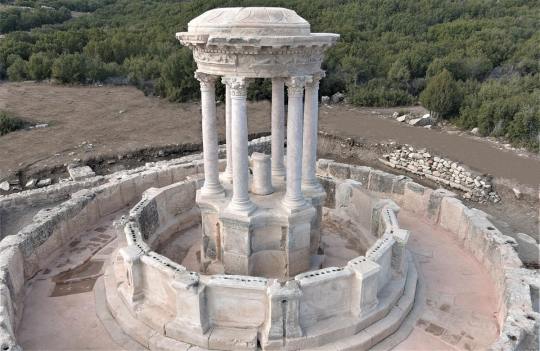





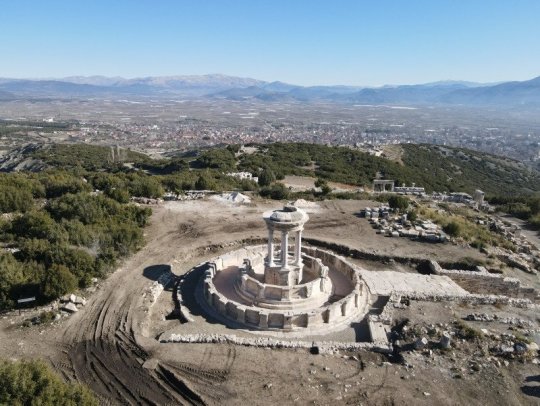
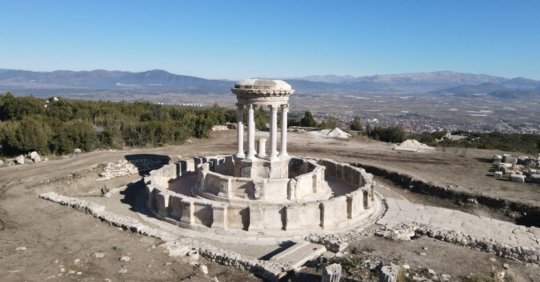
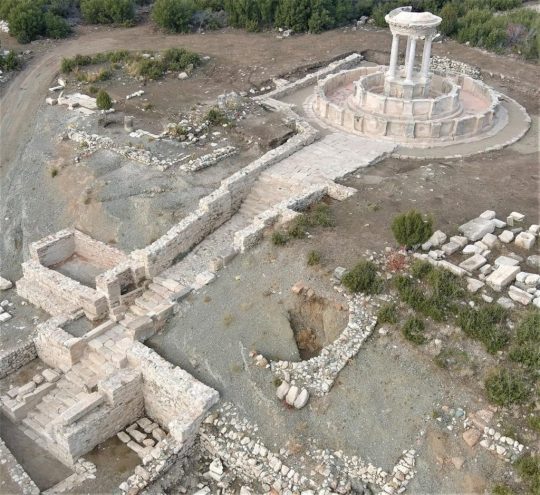
City of Gladiators Fountain Flows Again After 2,000-Years in Turkey
An ancient fountain that was destroyed in a 23 BC earthquake has been restored in Turkey's “City of Gladiators.' Now, the two millennia old water font is streaming drinkable water again, just as it did some 2,000-years ago.
Unearthing Turkey’s Ancient City Of Gladiators
The ancient city of Kibyra, or Cibyra Magna, is situated in the township of Gölhisar in the southwestern Burdur Province of Turkey. In ancient times it represented the capital city of an independent state known as Cibyratis, that lay just outside the north-western limits of the ancient province of Lycia, that thrived in Anatolia from 15-14th centuries BC, and as Lukka until 546 BC.
Strabo recorded Kibyra as having originally been settled by ‘Lydians,’ who were indigenous people in this region of Asia Minor. These people constructed over 100 stadiums and after the Roman general Lucius Licinius Murena defeated the ruler of Kibrya in 83 BC the city became part of the greater Roman province of Asia. Listed on the UNESCO World Heritage Tentative List , ancient Kibyra is known as the “City of Gladiators.” Now, archaeologists have announced that “a colossal fountain” has been restored and that it will “flow with fresh water for the first time in 2,000 years.”
Piecing Together An Ancient Masterpiece
Dr. Sukru Ozudogru, an archaeologist at Mehmet Akif Ersoy University, recently told Anadolu Agency ( AA) that his team of archaeologists have spent the past four months collecting “150 original fragments from the ruins.” Now, they have successfully “pieced the architectural masterpiece back together.” The “round-planned fountain” measures 15.24 meters (50 ft) in diameter by 7.92 (26 ft) high and after being built it was used for more than 600 years.
The team of archaeologists have also restored the original water supply system from the spring, so that the fountain now flows with drinkable water “just the way it did 2,000 years ago.”
Dr. Ozudogru described the water from the restored fountain as “spouting from the mouths of lion and panther.” Not only do these two animals feature heavily in Roman mythology but they are two of the animals that gladiators fought in the arenas. Incidentally, it was after the discovery of the “10,400-person stadium” that hosted hundreds of gladiatorial fights that Kibyra became known as the “City of Gladiators.”
Rebuilding What Nature Attempted To Destroy
Blending both Roman and Byzantine architectural styles, during the 1000 years of the Roman empire the city became famous for its blood-thirsty gladiatorial contests. However, a 23 BC earthquake almost flattened Kiybra, and if it were not for diligent citizens in the aftermath rebuilding the giant fountain it would have been lost in time long ago.
The AA article said the restoration of the fountain and its two pools required “68 original architectural pieces and 24 imitation blocks produced from the original stone type.” Furthermore, it was observed that the original fountain featured one large circular pool and the second pool was added decades later. Dr. Ozudogru maintains that when the fountain was functional, some 2,000-years-ago, the two circular pools supplied potable water to four different parts of the city.
Sticking With The Original Plan
As far as aesthetics are concerned, fragmentary remains informed the researchers the original fountain was detailed with “elaborate statues of animals, huge columns and embossed friezes.” The archaeologists used two moldings taken from original sculptures that were both unearthed during recent excavations, and the originals are currently being exhibited in the Burdur Museum.
The researcher explained that in Roman times “Water was a mythological hero” that flowed into the two pools from the mouths of “lion and panther” statues. Relating these two animals to Roman mythology “ Heracles lay on a panther skin and Dionysus, the god of wine, wore a lion skin," according to the professor. However, both of these animals were fought by gladiators in the 10,400-person stadium in Kibrya, which Akkurnaz explained “was a building designed for an assortment of blood-soaked spectacles, including gladiator fights and wild animal fights”.
By Ashley Cowie.
#City of Gladiators Fountain Flows Again After 2000-Years in Turkey#Turkey’s Ancient City Of Gladiators#ancient city of Kibyra#ancient monument#ancient fountain#ancient artifacts#archeology#archeolgst#history#history news#ancient history#ancient culture#ancient civilizations#roman history#roman empire#long reads
71 notes
·
View notes
Text






Medusa'nın gözlerine bakmak...
Kibyra
12 notes
·
View notes
Text
The ancient city of Kibyra is a true treasure trove of historic remains that once rivaled the famous Lycia! Discover how this rising city-state managed to establish itself outside the boundaries of Lycia and become a regional power, and how it was able to establish a federation with other towns.
24 notes
·
View notes
Photo
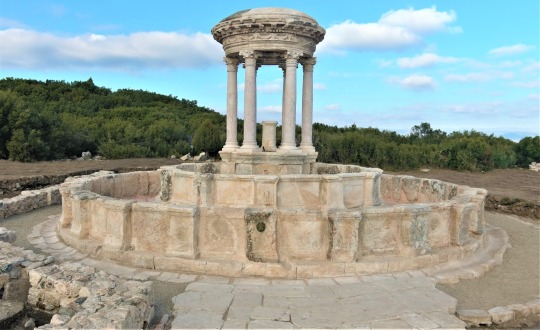
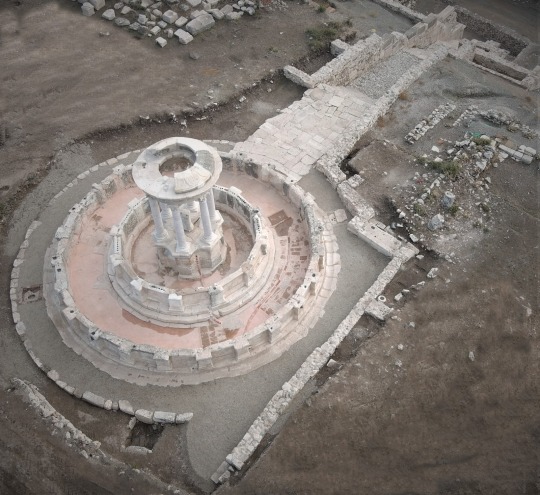

~ “The 2000-year-old monumental fountain that was under excavation in the Kibyra Ancient Town in Burdur has been restored. Water will flow again in May. The restoration of the round-planned fountain structure was completed using a total of 168 original parts excluding a portion of the conical roof. The structure is aimed to be used in accordance with the original in May 2023. The monumental fountain in question was built in the Roman era, after the great earthquake that occurred in Kibyra in 23rd year after the nation, at a stage where the city was replanned and rebuilt.“ ~
4 notes
·
View notes
Text
Fountain that stood in Turkey's ancient 'City of Gladiators' 2,000 years ago has been restored
Fountain that stood in Turkey’s ancient ‘City of Gladiators’ 2,000 years ago has been restored
A colossal fountain that once stood in the ancient ‘City of Gladiators’ has been restored and will flow with fresh water for the first time in 2,000 years.
An excavation team has been working in the city of Kibyra in Turkey for the past four months, collecting 150 original fragments from the ruins in the area to piece the architectural masterpiece back together.
Sukru Ozudogru, an archaeologist…

View On WordPress
0 notes
Photo

2.000-year-old Medusa mosaic, which adorns the orchestra section of Odeon in the ancient city of Kibyra in what is now Turkey.
Purloined from Daily Time Waster
1 note
·
View note
Photo
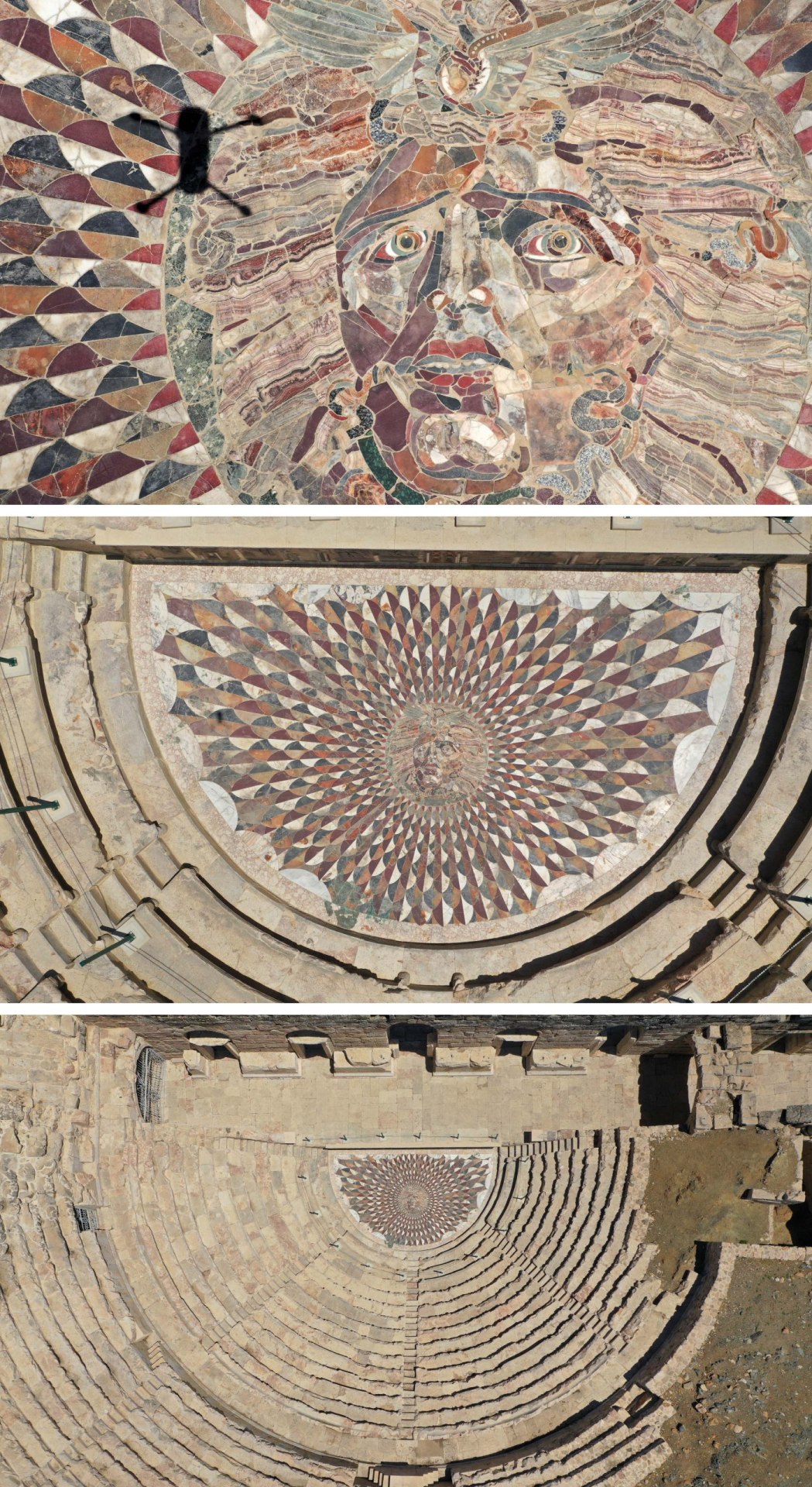
2.000-year-old Medusa mosaic, which adorns the orchestra section of Odeon in the ancient city of Kibyra in Burdur, Turkey. https://t.me/InterestingasfuckBackup/93842 #interestingasfuck #rinterestingasfuck #interestingasfuckreddit #interestingasfucksubreddit #r_interestingasfuck
0 notes
Video
youtube
Kibyra Ancient Theatre ²⁰²⁰ | Kibyra Ancient City - Turkey | Drone Vi...
0 notes
Photo

#Repost @arkeofili • • • • • • Kibyra Antik Kenti Strabon’un kayıtlarına göre, Kibyralılar aslen Lidyalı olup buradan göç ederek Kabalis bölgesine gelmişler ve yaklaşık MÖ 4.-3. yüzyıllarda tekrar yerleşim alanlarını değiştirerek bug��nkü Burdur'un Gölhisar ilçesinde büyük bir kent kurmuşlardı. Militarist karakteriyle öne çıkan Kibyra, stadyumu, odeonu, tiyatrosu, meclis binası, agorası ile oldukça önemli bir antik kent. 195 metre uzunluğundaki Stadion, Anadolu'daki en büyük ve en iyi korunan stadyumlar arasında yer alıyor ve yaklaşık 10.000 seyirci kapasitesine sahip. MÖ 1. yüzyıldan itibaren stadyumunda gladyatörlere gösteri yaptırılan antik kentteki kazılarda üzerinde gösteri dövüşlerinin canlandırıldığı çok sayıda gladyatör frizleri bulundu. “Gladyatörler şehri” olarak da bilinen kentin stadyumuna doğru nekropol alanından geçen anıtsal bir yol üzerinde gladyatörlere ait mezarlar bulunuyor. Aynı zamanda Kibyra Odeon'unun orkestra bölümünü süsleyen ve “Opus Sectile” tekniği ile ince mermer plakalarla yapılmış yaklaşık 2.000 yıllık Medusa mozaiği dünyada benzersiz. _____________ The ancient city of Kibyra, Burdur, Turkey. According to the records of Strabon, Kibyrians descended from Lydians and settled in Kabalis and its surroundings, and soon changed the settlement areas and established as a big city in Gölhisar district of modern Burdur around the 4th and 3rd centuries BC. Standing out with its militarist character, Kibyra is a very important ancient city with its stadium, odeon, theater, parliament building and agora. The 195-meter-long Stadion is among the largest and best-preserved stadia in Anatolia with seats for ten thousand audience. It housed gladiator fights, a fact supported by especially two sets of friezes depicting gladiators in various actions, which belonged to two monumental gladiator tombs that with other tombs flank the Necropolis Way leading to the Stadion. Also Kibyra's Odeion housed a universally unique 2000 years old Medusa mosaic made of fine marble slabs with Opus Sectile technique on its orchestra section. #rome #lion #salzburg #praha #honolulu burg #brazaville #toledo #salamanca #valencia #melbourn #edinburgh #bogota #sofia https://www.instagram.com/p/B_fCRi3hpi3/?igshid=gnuhq3v09oyl
#repost#rome#lion#salzburg#praha#honolulu#brazaville#toledo#salamanca#valencia#melbourn#edinburgh#bogota#sofia
0 notes
Photo
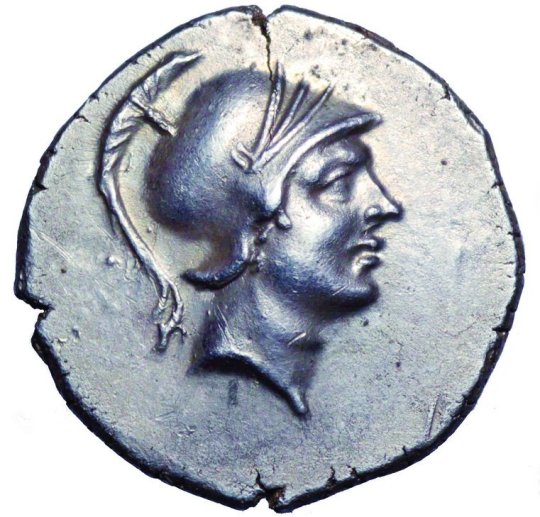

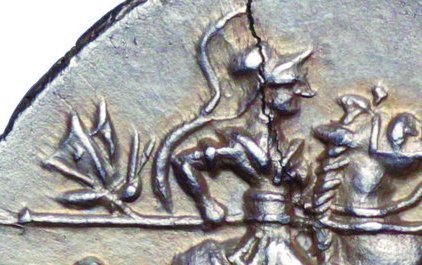
Very Rare Ancient Coin with a Butterfly
This is a silver drachm from the ancient city of Kibyra in Phrygia, circa 166-84 BC. The coin shows a young male head wearing a crested helmet. The reverse has the image of a horseman in armor, wielding a spear and shield, with the inscription M and ΚΙΒΥΡΤΩΝ below. Good Extremely Fine. Struck in fine style and remarkably well preserved. One of the finest known. Very Rare.
In the place of the butterfly on the spear, some of the other coins from Kibyra have the image of a bee, an eagle, a bunch of grapes, a wreath or the spot has been left blank .
You can see an aerial video of the city's ruins here and read more about Kibyra here. The ruins are some of Turkey's most impressive and least visited ancient sites.
#history#coins#ancient#greek#numismatics#kibyra#phrygia#butterfly#kibyras#spear#horseman#2nd century bc#1st century bc#drachm
356 notes
·
View notes
Photo

A mosaic made of coloured marble, a 2000 year-old female figure, adorning the orchestra section. Kibyra is an ancient city and an archaeological site in south-west Turkey, near the modern town of Gölhisar, in Burdur Province - via besok_s https://t.co/zbhia7tyBr #pubcrawl #ista…
0 notes
Photo

Medusa mosaic from ancient city of Kibyra, 1800 years old. Discovered in 2009.
552 notes
·
View notes
Photo

Check our FB to catch Symphonic "Türkü" Folk Songs at the amazing #ancient city of #Kibyra in #Burdur tonight at 1… …
0 notes